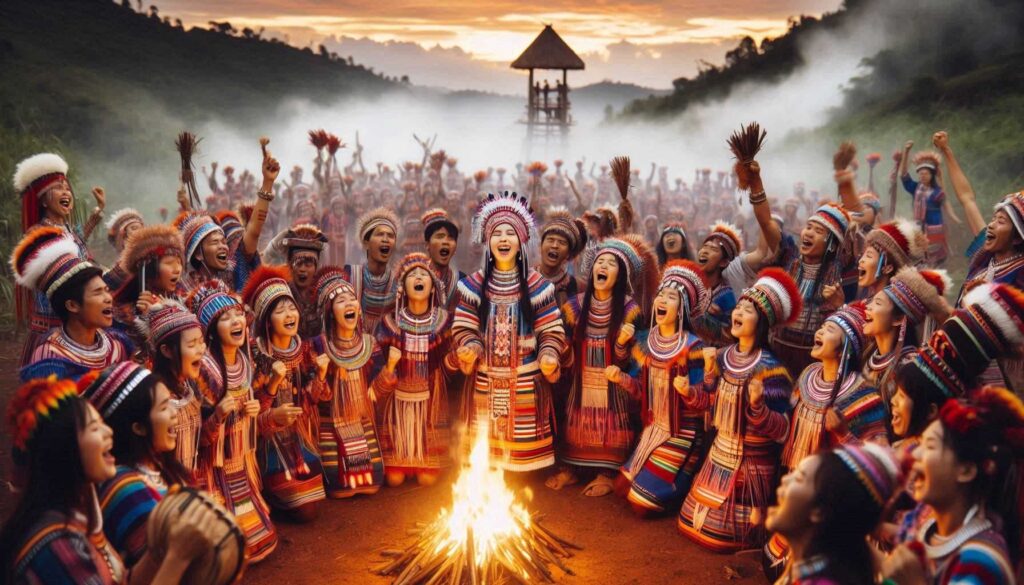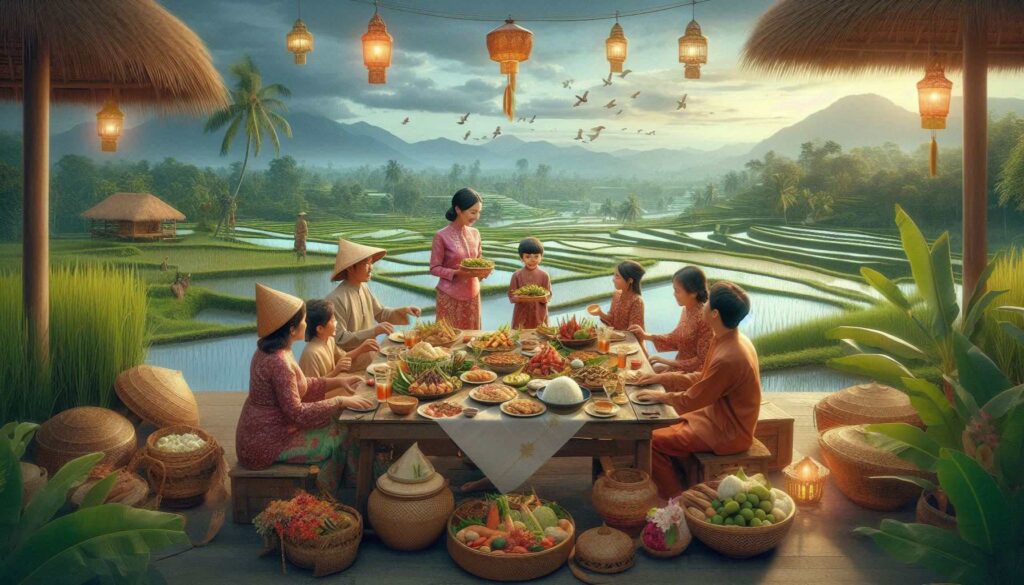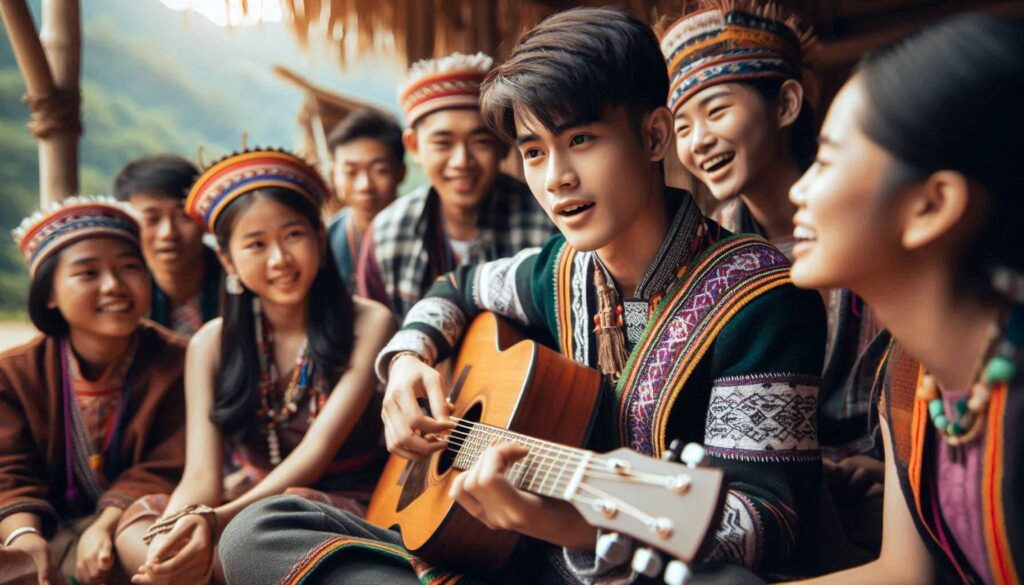Introduction
Mizoram, nestled in the northeastern corner of India, is a state rich in culture and tradition. The diverse festivals celebrated here not only reflect the vibrant spirit of the Mizo people but also showcase their deep-rooted connection to nature, agriculture, and spirituality. In 2025, festivals in Mizoram promise to be a magnificent celebration of life, community, and heritage, attracting visitors from far and wide.
Read More About Hindu Philosophy
This article will explore the major festivals celebrated in Mizoram in 2025, highlighting their significance, customs, and the joyous spirit that permeates these events.
1. Chapchar Kut

1.1 Overview
Chapchar Kut, celebrated in March, is one of the most significant festivals of Mizoram. It marks the end of the winter season and the beginning of spring. The festival is celebrated after the bamboo is cut and before the actual cultivation begins. It symbolizes a time of hope, rejuvenation, and joy among the Mizo people.
1.2 Celebrations
During Chapchar Kut, the Mizo people engage in various activities, including:
- Traditional Dances: Folk dances like Cheraw and Khuallam are performed, showcasing the vibrancy of Mizo culture.
- Feasting: Families and friends gather to share traditional dishes, such as bamboo shoot curry and rice, celebrating the bounty of the land.
- Rituals: Offerings are made to deities, thanking them for the blessings of the harvest and seeking their protection for the upcoming farming season.
1.3 Significance
Chapchar Kut reflects the deep connection of the Mizo people to their agrarian roots. The festival promotes unity, peace, and the rich cultural heritage of Mizoram, making it an essential part of the state’s identity.
2. Pawl Kut

2.1 Overview
Pawl Kut, also known as the “Harvest Festival,” is celebrated in December, marking the end of the harvest season. This festival is an occasion for Mizo families to express gratitude for the abundant harvest and celebrate the fruits of their labor.
2.2 Celebrations
Pawl Kut is celebrated with great enthusiasm, featuring:
- Community Gatherings: Villagers come together to celebrate with feasts, games, and storytelling, fostering a sense of community.
- Traditional Games: Various traditional games and sports are organized, encouraging participation from people of all ages.
- Cultural Programs: Cultural performances, including music and dance, are held, showcasing the talents of local artists and preserving traditional Mizo art forms.
2.3 Significance
Pawl Kut not only signifies the successful harvest but also strengthens community bonds. It serves as a reminder of the importance of gratitude and sharing in Mizo culture.
3. Mim Kut

3.1 Overview
Mim Kut is celebrated in September and is primarily dedicated to honoring the deceased. This festival is unique to the Mizo culture, reflecting their deep respect for ancestors and their belief in the continuity of life after death.
3.2 Celebrations
During Mim Kut, the Mizo people engage in:
- Offerings to Ancestors: Families prepare special meals and offerings for their deceased relatives, believing that the spirits of the departed visit during this time.
- Songs and Dances: Traditional songs and dances are performed, creating a festive atmosphere while honoring the memories of the ancestors.
- Community Feasting: Families gather for communal feasts, sharing stories of their ancestors, reinforcing familial bonds and cultural heritage.
3.3 Significance
Mim Kut emphasizes the importance of family, respect for ancestors, and the connection between the living and the dead. It serves as a reminder of the values of love and remembrance in Mizo culture.
4. Christmas

4.1 Overview
Christmas is celebrated with great enthusiasm in Mizoram, reflecting the state’s significant Christian population. The festival is marked by religious observance and cultural celebrations, blending traditional Mizo customs with Christian practices.
4.2 Celebrations
During Christmas, the Mizo people engage in:
- Religious Services: Many attend church services on Christmas Eve and Christmas Day, celebrating the birth of Jesus Christ.
- Feasting: Families prepare traditional dishes, along with cakes and sweets, sharing meals with loved ones.
- Decorations: Homes and churches are beautifully decorated, with Christmas trees and lights creating a festive atmosphere.
4.3 Significance
Christmas in Mizoram symbolizes hope, joy, and the spirit of giving. It showcases the harmonious coexistence of traditional Mizo culture and Christianity, promoting unity and celebration among the community.
5. Thangchhuah

5.1 Overview
Thangchhuah is a festival celebrated in May, primarily by the Mizo people of the southern part of the state. It is dedicated to the worship of deities and the performance of various rituals to seek blessings for prosperity and health.
5.2 Celebrations
Celebrations during Thangchhuah include:
- Ritual Offerings: The Mizo people offer rice, meat, and other food items to their deities, seeking blessings for health and prosperity.
- Cultural Performances: Traditional songs and dances are performed, showcasing the rich cultural heritage of the Mizo community.
- Community Bonding: The festival promotes a sense of community as people come together to participate in various activities, fostering camaraderie.
5.3 Significance
Thangchhuah is essential for reinforcing the spiritual beliefs of the Mizo people. It serves as a reminder of the significance of faith, community, and the blessings of nature in their lives.


